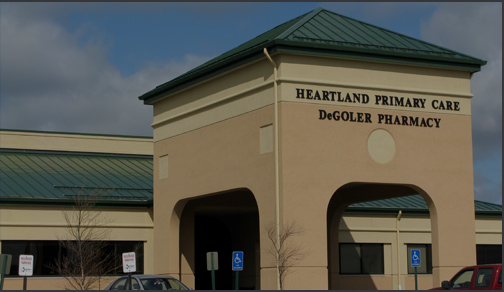What to Expect at a Leading Clinic Offering Urgent Care Services
What to Expect at a Leading Clinic Offering Urgent Care Services
Blog Article
The Value of Urgent Care Centers in Bridging the Space In Between Main Care and Emergency Solutions
Urgent care centers have become an important element of the healthcare landscape, efficiently resolving the critical demand for prompt medical focus without resorting to emergency situation solutions. By providing treatment for non-life-threatening problems, these centers aid to alleviate the worry on emergency situation rooms and improve individual accessibility to prompt therapy. Their extended hours and diverse services accommodate an expanding population looking for choices to standard medical care. Nevertheless, the advancing duty of immediate care facilities elevates important questions concerning their assimilation within the more comprehensive medical care system and the effects for person end results and source allocation.
Introduction of Urgent Care Centers
Urgent treatment centers have come to be a necessary component of the health care shipment system, supplying easily accessible clinical services for non-life-threatening conditions. These centers usually run outdoors standard workplace hours, offering patients an option to emergency rooms and key care settings. Patients looking for immediate treatment typically existing with issues such as minor injuries, infections, or diseases that need punctual interest yet do not posture an instant danger to life or arm or leg.
Immediate care facilities are staffed by a series of health care experts, consisting of medical professionals, nurse practitioners, and medical professional assistants, who are geared up to diagnose and deal with numerous clinical issues. They often feature diagnostic tools such as X-ray equipments and research laboratory solutions, allowing them to offer comprehensive treatment on-site.
The facility of urgent care centers has been influenced by the raising need for prompt clinical services in a fast-paced culture, where individuals might battle to safeguard appointments with health care providers. Therefore, these facilities intend to minimize blockage in emergency situation departments, improving total healthcare efficiency. Furthermore, urgent care facilities usually work as a bridge between medical care and emergency solutions, guaranteeing that people get proper care customized to their certain medical needs.

Advantages of Urgent Care Services
Accessing timely clinical care is a substantial advantage of urgent care services. These facilities supply prompt focus for non-life-threatening conditions, efficiently lowering wait times contrasted to traditional emergency situation departments. People looking for care for small injuries, diseases, or immediate wellness problems can obtain treatment without the long delays often related to healthcare facility brows through.
Another trick benefit is the prolonged hours of procedure. Several urgent treatment centers are open evenings and weekend breaks, accommodating clients that might not have the ability to visit their key treatment provider throughout typical workplace hours. This flexibility makes urgent care an obtainable alternative for those with active timetables or abrupt wellness concerns.
Additionally, urgent care centers typically supply a wide variety of solutions, consisting of diagnostic screening, X-rays, and basic research laboratory services. This extensive technique permits quick medical diagnosis and treatment, enhancing person contentment.
Additionally, immediate treatment centers are commonly extra cost-efficient than emergency clinic, making them an eye-catching alternative for people without insurance or those with high-deductible plans. Overall, urgent care solutions play a critical duty in providing accessible, prompt, and cost effective medical treatment.
Comparison With Health Care
Usually, patients usually consider their choices between immediate care facilities and main care service providers when looking for clinical interest. Both serve essential roles in the medical care system, yet they differ significantly in access, expense, and extent.
Main treatment providers are commonly the very first factor of contact for clients, concentrating on long-lasting health monitoring, preventive care, and chronic condition management. They use connection of treatment, promoting a patient-provider partnership that allows for detailed health assessments and personalized therapy strategies. Nonetheless, scheduling an appointment can be taxing, typically calling for days or weeks in breakthrough.
In comparison, urgent treatment centers supply instant look after non-life-threatening problems that need punctual focus, such as minor injuries or infections. These facilities often operate beyond conventional office hours, fitting individuals who may not be able to see their main treatment service provider over here during regular company times. Additionally, urgent treatment is generally a lot more economical than emergency area gos to, making it an appealing alternative for those with restricted medical care gain access to.
Eventually, while urgent treatment centers and health care service providers find here both add to patient health, they cater to distinctive demands, making it essential for patients to identify which choice finest lines up with their conditions.
Emergency Providers Interaction
The communication in between urgent treatment facilities and emergency solutions is a crucial facet of the health care landscape, particularly when people face scenarios that might escalate in intensity. Immediate care facilities work as a bridge in between health care and emergency divisions, dealing with non-life-threatening problems that require instant interest. This collaboration improves person end results and optimizes source allowance within the medical care system.
When people provide with urgent yet not lethal concerns, immediate treatment centers can efficiently manage their demands, alleviating blockage in emergency spaces. Facilities geared up with diagnostic capabilities can promote timely referrals to emergency solutions when a client's condition exceeds the scope of urgent care treatment. This seamless communication helps guarantee that individuals receive the proper level of care without unneeded hold-ups.
Moreover, effective interaction between immediate care providers and emergency situation solutions is important. Sharing individual info and therapy backgrounds promotes collaborated treatment, decreasing the danger of redundant examinations and procedures. As medical care remains to develop, the dynamic partnership between immediate care facilities and emergency situation services will play a critical function in boosting client care efficiency, contentment, and general wellness outcomes within the area.
Future of Urgent Care Facilities
As medical care needs evolve, the future of urgent treatment facilities is positioned to come to be significantly indispensable to the general clinical environment (Urgent Care). These facilities are likely to expand their functions by incorporating innovative innovations, such as telemedicine, expert system, and digital health and wellness record combination. This will certainly boost person gain access to and enhance care control in between urgent treatment, health care, and emergency situation services
Furthermore, urgent care facilities are expected to diversify their solution offerings to include preventative treatment and chronic illness administration. This shift will position them as crucial elements in taking care of populace health, lowering the problem on emergency divisions, and resolving voids in key treatment schedule.
The growing trend of value-based treatment will Extra resources even more speed up the change of urgent care facilities, prompting them to concentrate on client outcomes and fulfillment. Facilities may also take on joint method versions, working very closely with experts and health care suppliers to make certain detailed patient administration.
Verdict
Finally, urgent treatment centers serve a crucial feature in the health care system by supplying immediate access to treatment for non-life-threatening conditions, successfully reducing pressure on emergency services. Their extended hours and varied series of solutions boost individual comfort and contentment, while additionally making sure proper treatment shipment. As medical care requires remain to progress, the function of immediate treatment facilities will likely become progressively substantial, further bridging the void in between medical care and emergency services.
The establishment of immediate treatment centers has been influenced by the increasing need for prompt clinical services in a fast-paced society, where individuals may struggle to protect consultations with key treatment suppliers. In addition, immediate care facilities typically offer as a bridge between key care and emergency solutions, making certain that clients receive suitable treatment tailored to their details medical needs.
Several urgent treatment facilities are open evenings and weekends, fitting individuals who might not be able to visit their primary treatment service provider throughout typical workplace hours (Urgent Care). As healthcare proceeds to evolve, the vibrant partnership in between immediate treatment centers and emergency services will certainly play an essential role in boosting individual care effectiveness, satisfaction, and total health and wellness outcomes within the neighborhood

Report this page